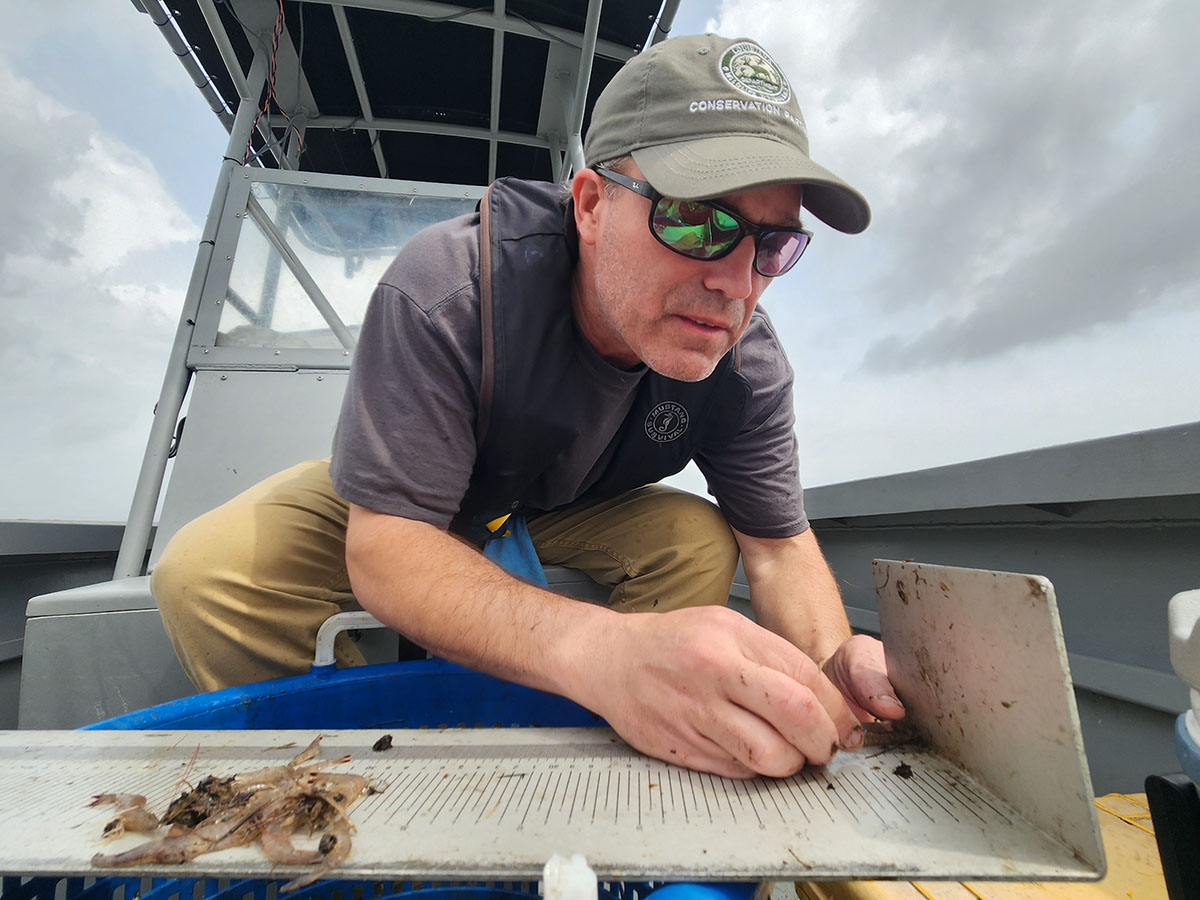
Shrimp “Crash Trawls” are an all-hands-on-deck effort by the Louisiana Department of Wildlife and Fisheries Marine Fisheries Section that takes place each year during work week 18 (18th week of the calendar year). The purpose of this effort is to assess the average size, distribution, and abundance of Brown Shrimp ahead of the May Louisiana Wildlife and Fisheries Commission meeting, where the Marine Fisheries staff provide a recommendation on a season-opening and structure for the spring inshore shrimp season.
Leading up to week 18, the department begins sampling with 6-foot trawls weekly, starting the first week of April. At the same time, 16-foot trawls are conducted every other week in April. The purpose of different-size trawls is to sample juvenile penaeid shrimp in shallow edge habitats in the interior marshes with the 6’ trawl and to sample penaeid shrimp in the larger bays and waterways with the larger 16’ trawl gear. Both trawls are used to determine relative abundance, size distribution, and average size of penaeid shrimp.
Week 18, or “Crash Trawl” week, is unique because it’s the same week as the Commission meeting. All five regional Marine Fisheries offices across the state, all the boats, and all the staff head out on either Sunday or Monday to sample. They use their 16-foot trawl stations and a random sample of 6-foot trawl stations across the coast with the goal of having all the samples sorted and entered into the database by close of business on Tuesday of that week. This allows our managers in each of the five offices to converge at LDWF headquarters for the annual shrimp meeting to work with our Crustacean Program Manager, Peyton Cagle, in developing the department’s shrimp season recommendation based on the most recent data.
This data and our recommendation is presented to the Shrimp Task Force. The Task Force will review the department’s recommendation and formulate their recommendation for the LDWF Commission. During the Commission meeting, our Crustacean Program Manager will present the latest shrimp data as well as the department’s season recommendations for consideration. Finally, the Commission will pass a motion to set the season structure and potentially give the Secretary the authority to open and close the shrimp season if any enforcement or biological need is necessary. This is the process that sets the shrimp season in place each year.
